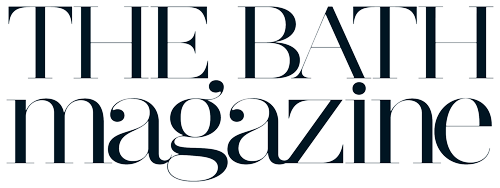Since its formation in 1972 the Brodsky Quartet has performed over 3000 concerts on the major stages of the world.
A natural curiosity and insatiable desire to explore has propelled the group in many artistic directions and continues to ensure them a place at the forefront of the international chamber music scene. Emma Clegg talks to Paul Cassidy…
The Brodsky Quartet – formed in Middlesbrough in 1972 by brother and sister Michael and Jacqueline Thomas with friends Ian Belton and Alexander Robertson – is this year celebrating its 50th anniversary. The group is named after the eminent Russian violinist Adolf Brodsky (1851–1929), who was a dedicated quartet player. Original members Ian Belton who plays second violin and Jacqueline Thomas who plays cello, still play for the group. Paul Cassidy playing viola joined in 1982 and Krysia Osostowicz joined as first violin in 2021.
Over those years, with some different combinations of players in viola and first violin, the Quartet has performed and recorded classical music, specialising in the string quartet repertoire of composers such as Haydn, Beethoven, Schubert, Bartók, Brahms, Debussy, Ravel and Shostakovich. But they have also become well-known for their groundbreaking performances and cross-genre collaborations. The Quartet has experimented widely with the quartet form, including collaborations over the years with rock and pop figures such as Elvis Costello, Sting, Björk, Katie Noonan and Paul McCartney. The Quartet has also commissioned many contemporary composers and championed new work from composers.
In October the Quartet is bringing a selection of Shostakovich’s string quartets to the Wiltshire Music Centre in Bradford on Avon. Three concerts played over a day on 14 October – at 1pm, 4pm and 7.30pm – will see groupings of a selection of the composer’s 15 quartets representing different periods of his life. Shostakovich (1906–1975) was an outstanding composer in the Soviet Union and a patriotic Russian and loyal communist, but privately he questioned the cultural restrictions of the political system, and as a result some of his compositions were denounced and censured by the State.
When I spoke to viola player Paul Cassidy, I first wanted to find out why the string quartet is such a powerful and widely appreciated classical musical form. Paul told me that quartets originate from the mid-18th century, with the form first established by Austrian composer Joseph Haydn (1732–1809).
These quartets of Shostakovich, there is nothing like them in music; nothing comes close. Because they are like a personal diary…
“Almost all the heavyweight composers saved their best for the quartet. It was recognised as a highly challenging form. Mistakes don’t get hidden within a quartet and it’s also an incredibly personal medium. There is something about four people that is powerful – a lot of rock groups, for example, are four. It is something in the chemistry of the number – if you’ve got a trio it can very easily be two against one. And if you have five or more people, then it gets diluted.
“People are often quite shocked, you know, when they come to a live concert and get close to us when we’re actually performing, because it’s a very physical thing. And because we don’t have amps, we can’t just turn a knob to increase the volume; if you want to get louder or more passionate, you have to perform it like that.”
Paul, who is from Derry, Northern Ireland, started playing the violin when he was around eight and later took up the viola. The move from violin to viola is not a case of the same technique on a bigger instrument – it requires a transition because viola uses the alto clef instead of the treble. “The viola is quite a different ballgame to the violin,” says Paul. “It goes a fifth lower and it’s not the same because the physics are all wrong. And so you have to kind of coax the sound out on a viola whereas on a violin, you just kind of play away.”
The Brodsky Quartet has become known for writing their own music arrangements. Paul explains, “Arranging has always been in our blood. Many string quartets will finish the concert and for an encore, they’ll play one movement of a quartet. But we thought that an encore should be something surprising. So very gradually we started arranging things using orchestral pieces, piano pieces and songs, things that we loved and we felt would work well. Every 10 years or so we do an album where we cherry pick the most recent additions to that repertoire and we’ve now got five albums that reflect that journey. I also just enjoy the process of taking an amazingly beautiful piano piece by, say, Debussy and making it into a quartet. It’s kind of cool and fun.”
During the 1980s, in an era when the accepted clothing for classical musicians was formal tailcoats and dresses, the Quartet were keen to find clothes that were more comfortable. This led to a relationship with Japanese fashion designer Issey Miyake. “I met Miyake, and he had these whacky and wonderful imaginative creations, but he also had this line called Permanente, a more classical line,” says Paul. “I said to him ‘what could be better than a string quartet to show this classic line to your work’, and he really liked this notion.” The Quartet ended up playing on the catwalk, playing live for Miyake’s Men’s Show in Paris in 1986.

Another innovation from The Quartet happened in 1992 when they started to perform standing, unlike all other groups at the time. After the first attempt they never looked back, released from the constraints of chairs, inspired to project to the audience in a spirit of inclusion. Paul says, “We started standing up because we had become excited about the combination of string quartet and voice and we started to play with singers. When you play with a singer the singer will always be standing, so we thought we’d better join in, and then we got used to standing up to play. Weirdly it was a very underused and undervalued combination, but we loved it and we started getting heavily into it. It became so obvious that you can be so much more expressive standing, and within the group you can be so much more communicative. But within the classical music world 35 years ago that was a huge decision.”
The Quartet have become known for their love of Shostakovich and the performance of Complete Shostakovich Cycles – meaning playing each one of his 15 string quartets one after the other. They were also unusual for championing this master composer in an era when he was not widely recognised. Paul explains the ensemble’s connection with the composer and his music: “When the Quartet started in 1972, Shostakovich was still alive. And there were still about four quartets that he hadn’t written. So they were aware of these quartets as they appeared.
“Those quartets of Shostakovich, there is nothing like them in music; nothing comes close. Because they are like a personal diary – he would turn to the quartet when he had something personal he wanted to say. So, for example, the first quartet was written after the birth of his son and he called it ‘Spring’; there’s one for his first wife who died tragically young; he wrote his own epitaph in number eight; there’s one for his mistress, who he was madly in love with, but it was unreciprocated. He wrote a quartet for each of the members of the Beethoven Quartet, his friends who premiered all his quartets; and the last quartet is an extraordinary experience because he was literally dying. He was in bed and could barely get the energy to write the notes down. But it is like a requiem for all of us, for mankind. So the journey within the quartets is just incredible.”
“The first concert we are playing is String Quartet Nos 1, 2 and 3. It shows Shostakovich finding his way into the medium – it’s kind of beautiful with the first quartet very tentative, almost like a little étude. But then the second quartet is this huge virtuosic, which is just amazing. These two see him entering the world very carefully. He feels Beethoven, you know, looking over his shoulder. But with the second quartet, he really opens the door and arrives. And then in the third quartet it is very recognisably him.
“The second concert is String Quartet 7, 8 and 9. The eighth quartet has his own epitaph and is one of the most powerful pieces of music written by anyone, ever. And the ninth quartet is him finding love again, joyous and beautiful. For the final concert, we’ve chosen two of the four that he dedicated to the Beethoven quartet. So 11 is for the second violin 13 is for me, the viola, and then we finish inevitably with number 15.”
‘So what is the magic that has kept the ensemble together for 50 years?’, I ask Paul. “We have a kind of never-ending curiosity. And we’re very open. We’re not cynical beings that have been browbeaten into the classical dark, because classical music can be horribly restrictive, and we don’t buy into that for a second. That could be a reason why we’re still around 50 years later.”
The Brodsky Quartet perform three concerts with selected string quartets by Shostakovich at the Wiltshire Music Centre in Bradford on Avon on 14 October: Birth and Early Life (No 1, No 2, No 3) at 1pm; the Brodsky Quartet The Man – his life and loves (No 7, No 8, No 9) at 4pm; and Requiem (No 11, No 13, No 15) at 7.30pm. £16 for each concert, with a 20% discount if booking all three, free for under 25s. brodskyquartet.co.uk; wiltshiremusic.org.uk


